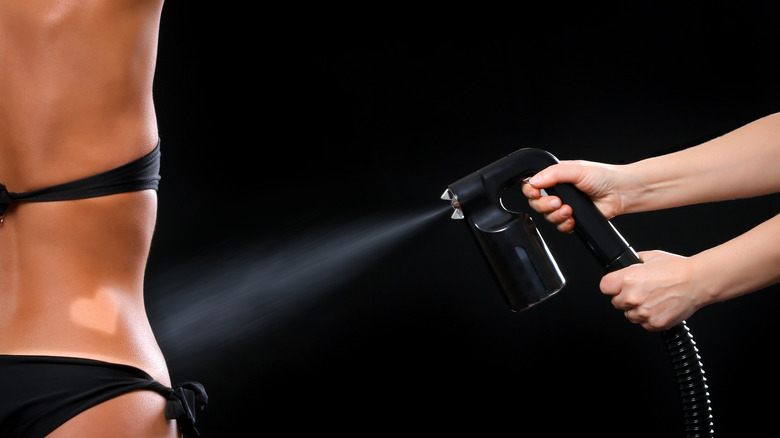The Hidden Side Effects Of Self-Tanner
Armed with the knowledge that too much sun increases the risk for skin cancer and premature aging, most of the population reaches for self-tanner to attain a healthy summer glow as an alternative. From lotions to sprays, self-tanners have been around for decades, and while they may be safer than direct sunlight, there are some hidden side effects that you should know about.
The active chemical found in most self-tanners is dihydroxyacetone (DHA), and it is the only substance approved by the Food and Drug Administration (FDA) for sunless tanning products (via Scientific American). It works by reacting with the amino acids found in the top layer of dead skin cells. These kinds of tans are temporary because the dead skin that reacts with the DHA eventually sloughs off. DHA is restricted to external use only, so be sure to avoid contact with your eyes, nose, or mouth (via Harvard Health Publishing).
Self-tanners have been linked to certain skin and lung conditions
Some side effects associated with self-tanners involve the development of certain skin conditions. In a scientific review of common tanning practices, a report issued by the FDA indicated that as much as 11% of the DHA chemical found in self-tanning products can seep through the outer layer of our skin and make its way into the deeper levels below the surface (via Journal of Clinical and Aesthetic Dermatology). Research also suggests the possibility that DHA may negatively affect skin's DNA. However, medical experts at Harvard Women's Health Watch emphasize the need for further testing to ultimately determine the safety of prolonged exposure to the active chemical.
It is important to follow instructions when applying self-tanners, paying close attention not to inhale any fumes. Research shows inhaling DHA could increase your risk of developing chronic obstructive pulmonary disease (COPD), asthma, and even cancer (via TIME). Therefore, take care to cover your eyes, nose, mouth, and ears when applying a self-tanner.
It is also worth noting that self-tanners do not prevent sun damage on their own and should be used in addition sunscreen.


